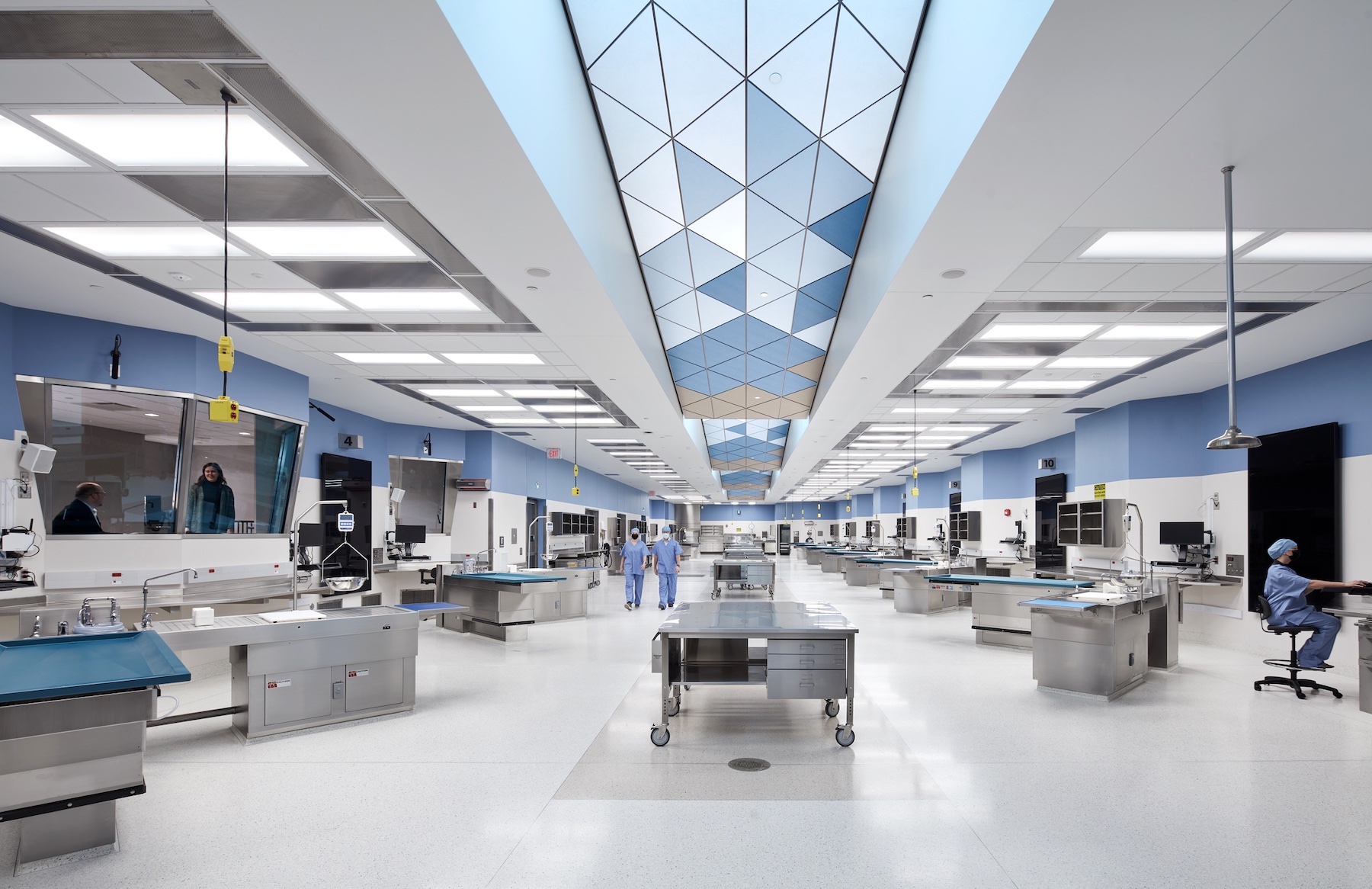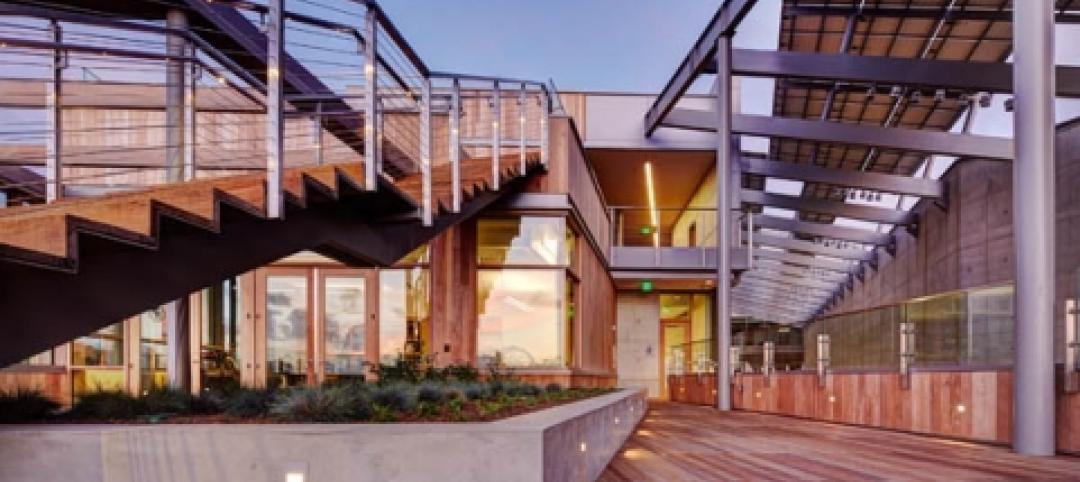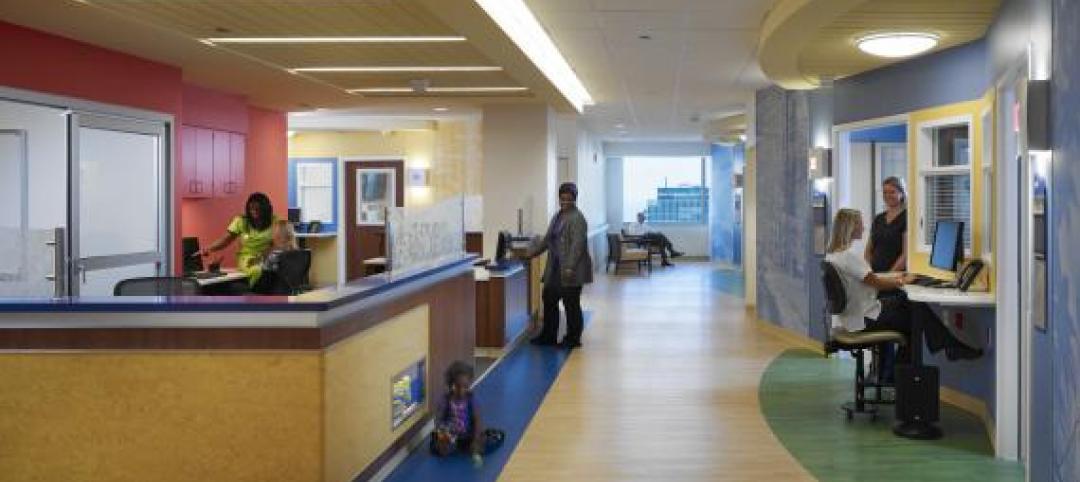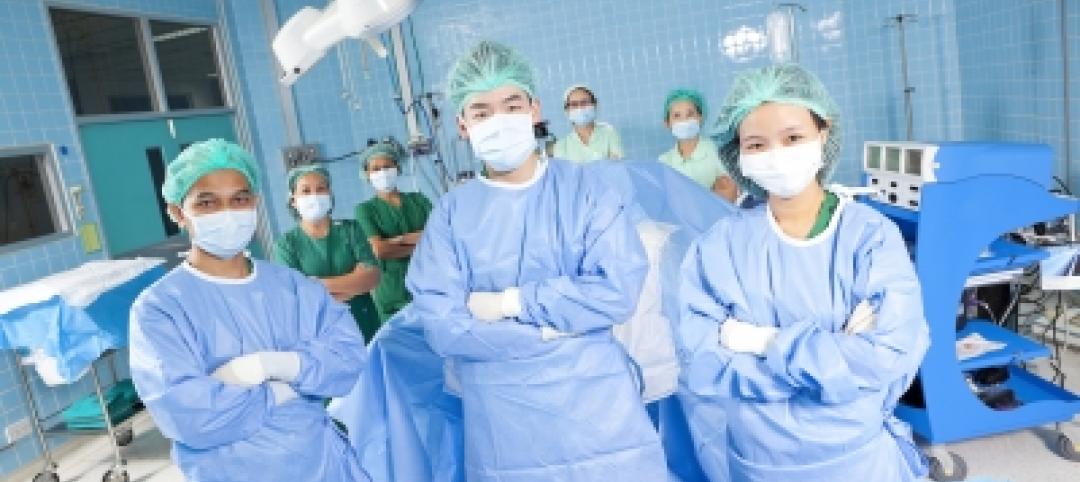Last November, a team led by LEO A DALY completed a new medical examiner office building for Hennepin County in Minnesota that has been recognized as a one-of-its-kind facility in the U.S. The $53 million, 64,000-sf building, located in Minnetonka, Minn., is serving as both a regional center of excellence and a nationwide destination for professional education. It replaces an office that, in 2021, investigated a record 10,000 deaths, according to the Minneapolis Star Tribune.
Dr. Andrew Baker, the county’s chief medical examiner, and his staff reportedly visited nearly a dozen medical examiner offices around the country in search of best practices. They found only three construction firms in the country that specialize in medical examiner offices and crime labs, according to the Star Tribune. (Iowa-based Knutson Construction was the general contractor on this project.)
Indeed, this was the first medical examiner’s facility that LEO A DALY had worked on. The services provided by the firm were architecture, interior design, structural, mechanical, electrical, and fire protection engineering. The project’s lab consultant was MWL Architects. Egan Mechanical was the mechanical subcontractor, and Parsons the electrical sub.
The new facility is set up for greater efficiency and ergonomics. For example, previously bodies that entered the morgue had to be transferred from a gurney to a table by staff, thus creating an injury risk. The patented tables in the new facility can be moved up or down to accommodate the staff’s height, strength, and dexterity. In addition, the new office has its own CT scanner, which allows for greater precision when presenting evidence for trials, and for reducing autopsy times.
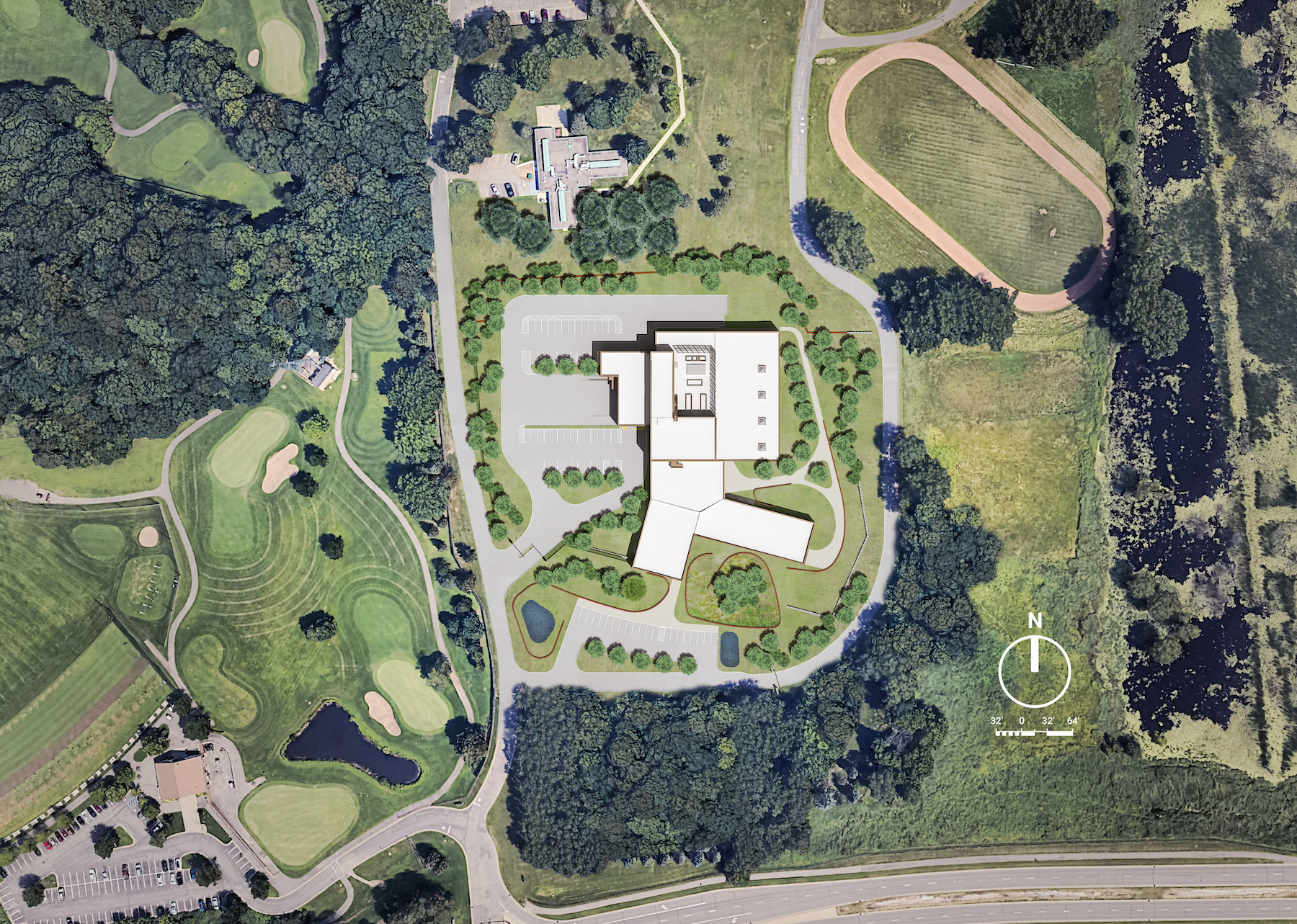
Function and form
The new office “advances design for integration, well-being, and discovery,” states LEO A DALY. Its northern wing houses laboratory functions, including 12 autopsy stations, storage coolers, and freezers for more than 130 decedents, specialized examination and analysis areas, tissue recovery, investigations, and spaces for advanced observation and training. Finishes were selected for durability and ease of sanitation. Strict security and safety measures are balanced with studious attention to staff health and well-being.
The southern wing houses office space, training rooms, consultation spaces, and shared lounges. A unifying hub provides a place for relaxation, connection, and access to the exterior space. The facility is nestled into a woodland and provides opportunities to connect with nature and enjoy respite from this stressful work.
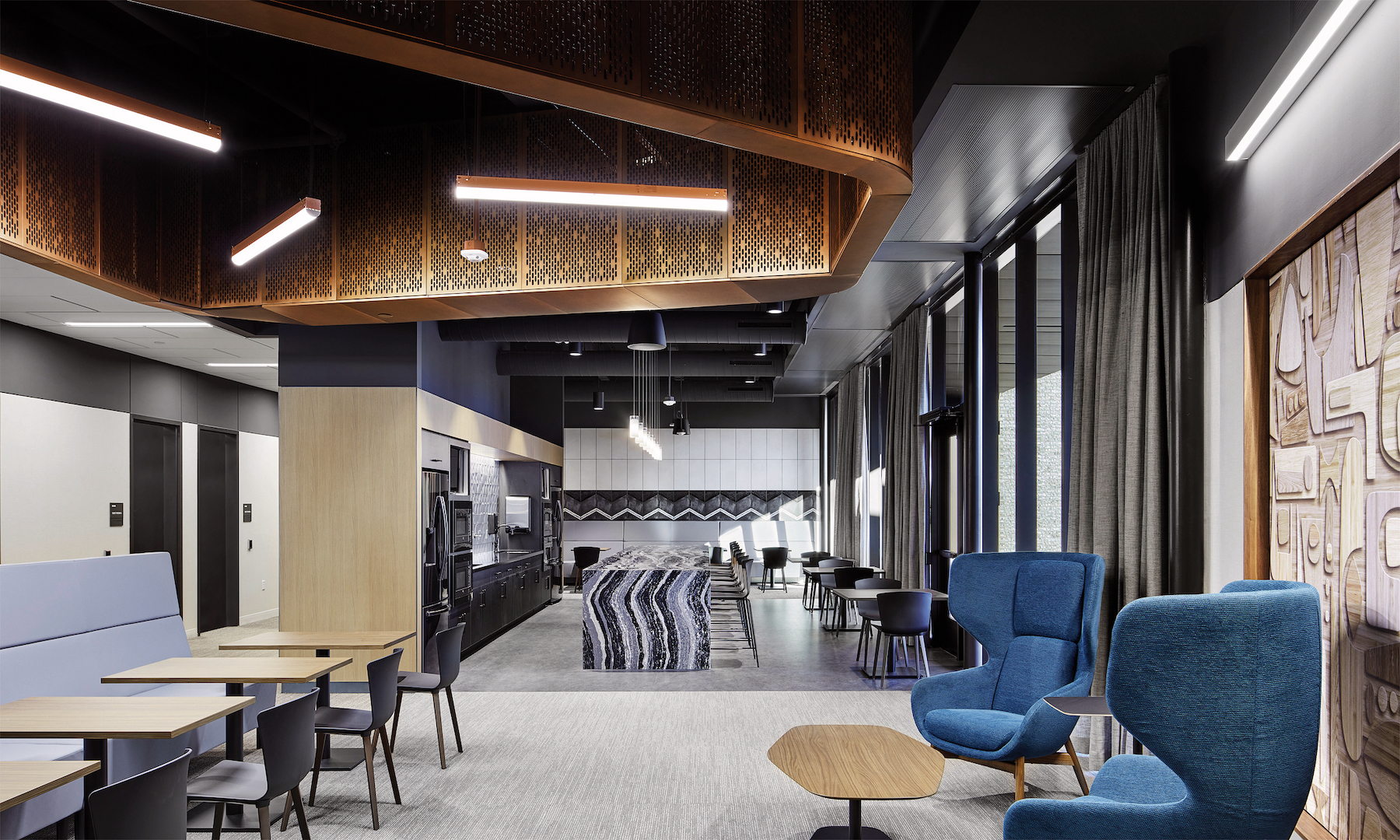
Well-being and mental health
Trauma-informed care provided the nexus of a design for a workplace focused on supporting the mental, emotional, and social health of the staff and doctors.
The building’s placement on the site captures views from staff offices, training and break areas into natural forests, prairies, and wetland areas. Daylight streams into the interior through large sidelights in the office wing. Skylights in the laboratory wing scatter diffuse, refracted light throughout the autopsy area. Angled skylights provide natural light to improve color clarity, aid diagnosis, and prevent visual fatigue. Overhead and task lighting are each manually adjustable and automated for energy efficiency.
Upon exiting the lab, examiners and staff have immediate access to the exterior thanks to the office wing’s branched form. Choice—a central element of trauma-informed design—is offered between spaces for social interaction and quiet, personal reflection. Natural materials and lighting strategies were used to reduce stress levels.
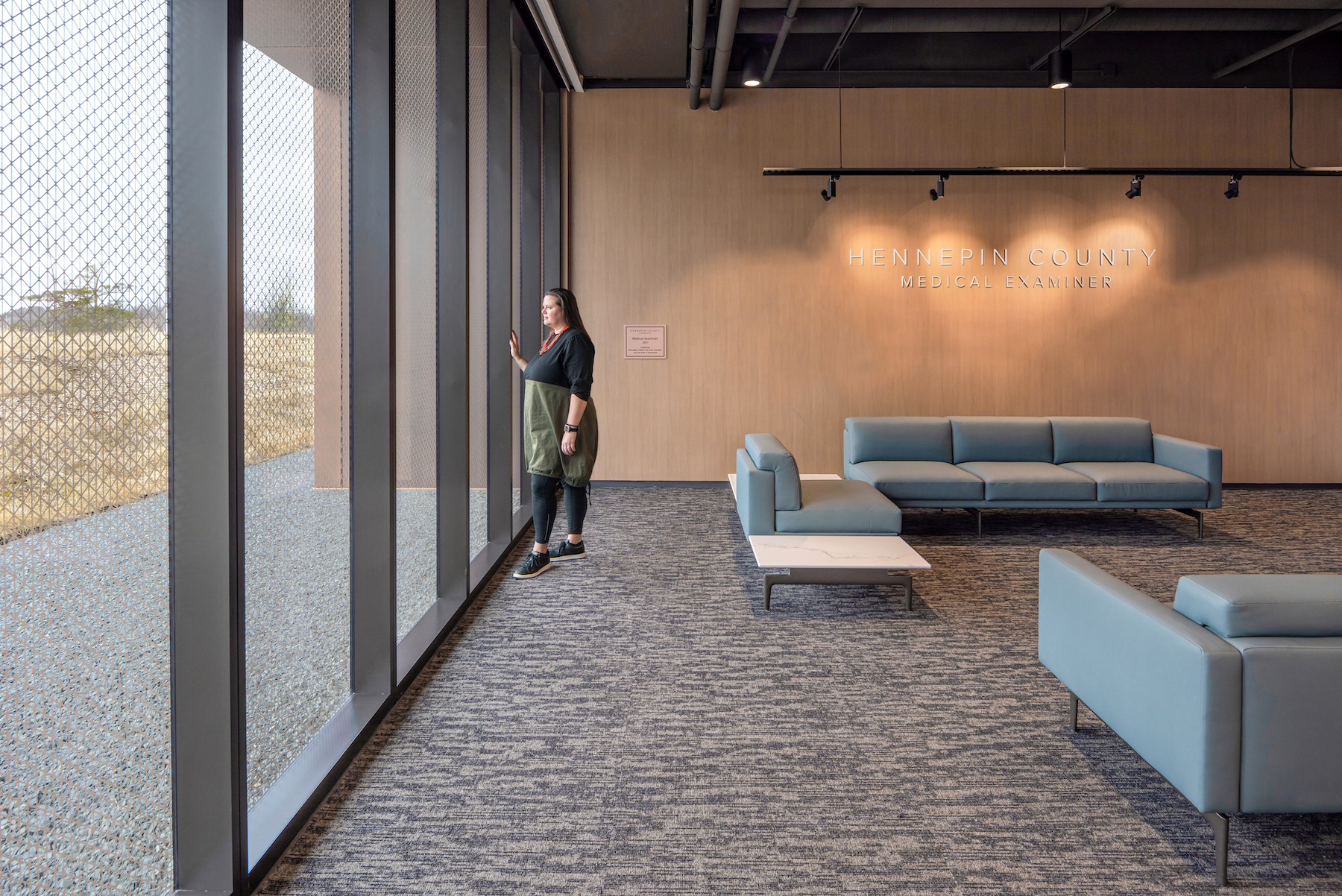
Indoor air quality improved
Hennepin County handled an estimated 1,500 autopsies in 2021.
Autopsies subject doctors and staff to an array of odors and physical strain. The design of the new facility responds with a strategic focus on indoor air quality, ergonomics, and injury prevention.
Computational Fluid Dynamics (CFD) modeling was used to create a breathing zone for doctors and staff that is continuously refreshed with clean air. Each autopsy station is zoned separately and includes personal controls over airflow volumes. Outside air is carefully directed downward and toward low sidewall exhaust grilles, virtually eliminating contaminated air from the room. To save energy, an override switch can be triggered when the space is unoccupied.
Eliminating air flow between the lab and office areas is achieved through precisely controlled air pressure. Clean rooms are positively pressurized relative to dirty rooms to contain odors, pathogens, and contaminants. The office wing of the building maintains positive pressure from all other sections of the building through a separate mechanical system.
Design for discovery
The new Medical Examiner office has achieved National Association of Medical Examiners accreditation, and has been toured by chief medical examiners from across the country. The building’s educational aspects enable discovery by serving as a feeder for medical examiner recruiting.
Unique training features, such as 180-degree visual table observation viewing platforms and 96-inch vertical monitors, provide in-depth educational opportunities for traveling fellows and doctoral students. According to the client, the facility “not only prepares the workforce of the future, but [also] places our region in a sought-after position for the development and training of a highly skilled scientific workforce, adding value to our economy.”
Related Stories
| Feb 24, 2014
First look: UC San Diego opens net-zero biological research lab
The facility is intended to be "the most sustainable laboratory in the world," and incorporates natural ventilation, passive cooling, high-efficiency plumbing, and sustainably harvested wood.
| Feb 18, 2014
Study: 90% of healthcare providers say Affordable Care Act is 'step forward,' but major revisions needed
Providers are excited about opportunities to address long-term health issues in the U.S., but worries about the transition persist, according to a new study by Mortenson Construction.
| Jan 30, 2014
What's in store for healthcare capital markets in 2014?
Despite the shake up stemming from the Affordable Care Act, 2014 will be an active year in healthcare capital markets, according to real estate experts from CBRE Healthcare.
| Jan 28, 2014
16 awe-inspiring interior designs from around the world [slideshow]
The International Interior Design Association released the winners of its 4th Annual Global Excellence Awards. Here's a recap of the winning projects.
| Jan 13, 2014
Custom exterior fabricator A. Zahner unveils free façade design software for architects
The web-based tool uses the company's factory floor like "a massive rapid prototype machine,” allowing designers to manipulate designs on the fly based on cost and other factors, according to CEO/President Bill Zahner.
| Jan 11, 2014
Getting to net-zero energy with brick masonry construction [AIA course]
When targeting net-zero energy performance, AEC professionals are advised to tackle energy demand first. This AIA course covers brick masonry's role in reducing energy consumption in buildings.
| Dec 20, 2013
Top healthcare sector trends for 2014 (and beyond)
Despite the lack of clarity regarding many elements of healthcare reform, there are several core tenets that will likely continue to drive transition within the healthcare industry.
| Dec 17, 2013
IBM's five tech-driven innovation predictions for the next five years [infographics]
Smart classrooms, DNA-based medical care, and wired cities are among the technology-related innovations identified by IBM researchers for the company's 5 in 5 report.
| Dec 13, 2013
Safe and sound: 10 solutions for fire and life safety
From a dual fire-CO detector to an aspiration-sensing fire alarm, BD+C editors present a roundup of new fire and life safety products and technologies.
| Dec 10, 2013
16 great solutions for architects, engineers, and contractors
From a crowd-funded smart shovel to a why-didn’t-someone-do-this-sooner scheme for managing traffic in public restrooms, these ideas are noteworthy for creative problem-solving. Here are some of the most intriguing innovations the BD+C community has brought to our attention this year.


